1. The Mystery of Hummingbirds (Long-billed Hawkmoth)
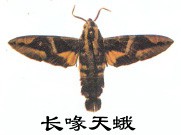
Hummingbirds (class Aves) are as large as swallows and smaller than wasps. The plumage color is usually extremely bright, the beak is slender and tubular, and the tongue can be retracted freely. It often flies between flowers to feed on nectar and small insects on the flowers. The long-beaked hawkmoth has a very long beak, is active during the day, and flies very fast, so it is often mistaken for a hummingbird.
2. Skillfully woven coir raincoat (coir raincoat moth)

The larvae of the moth spin silk and weave them into capsules of various shapes. Broken branches, residual leaves, soil particles, etc. are adhered to the capsules, and the larvae inhabit them. When moving, extend the head and chest and move the bag. The mature larvae hang the sac on the plant with silk and pupate inside the sac. The female moth is wingless and lives in the capsule her entire life. After the male moth emerges, it flies out from the lower end of the sac. After the female moth emerges, it remains in the sac, extending its head and chest, waiting for the male moth to fly in, mate and lay eggs in the sac. Larvae damage fruit trees, forest trees, cereal crops and vegetables.
3. The secret of sparrow eggs (thorn moth)
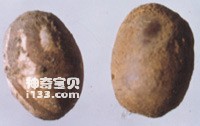
thorn moth cocoon
What do you see in the photo on the right? You would definitely say they are sparrow eggs, but actually they are not, they are the cocoons of thorn moths. The pupa of the thorn moth is enclosed in a smooth and hard calcareous cocoon. Some species have patterns on the cocoon and are similar in size and shape to sparrow eggs. When it emerges, one end of the cocoon splits and flies out. In general, the cocoons made by insects are relatively soft. Why is the cocoon made by the chinchilla a hard shell? How is its small house built? The chinchilla is the larvae of the cyanobacteria and feeds on the leaves of its host. The larvae grow up after several molts, and when they develop into mature larvae, they no longer feed, because the nutrients accumulated in their bodies are sufficient for them to survive the winter, pupate, and become adults. The larvae first leave the leaves of the host tree, climb onto the branches, choose a suitable place, use their mouths to clean off the rough skin and dirt on the branches, and then spin out a little silk to cover themselves and serve as the skeleton for making cocoons in the future. , and then discharge a large amount of viscous gray-white liquid from the anus, and then it squirms and rotates in the silk mask, spreading the mucus evenly on the silk mask. At this time, the cocoon is still transparent and the activity of the larvae can be seen. The newly made thin cocoon is semicircular, and the brown epidermal pigment spots on the larvae's body are attached to the thin cocoon and will become the stripes of the "sparrow egg". Then it spins silk and spits out green mucus from its mouthparts to strengthen the walls of the house. After spitting out, it shrinks its body and spends the winter in seclusion in a small room. The originally transparent thin cocoon condensed into an opaque hard shell after drying in the air, and changed from the original semicircle to an oval shape. So far, Yang Lazi's building is a solitary residence on a high tree. The small villa is finished.
4. Hang someone with steps instead of a ruler (chi moth)
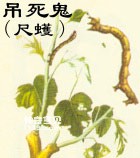
The larvae of the inchworm are called "inches", and the masses are called "bugs" or "toxoplasma". The abdomen only has one pair of legs on the sixth and last segments. When moving, the body flexes and stretches, just like a person measuring a ruler with his hands. When resting, the body is fixed with its abdomen and legs, and the front part of the body is straightened at an angle to the plant it is standing on, mimicking the branches of a plant. When the larvae are frightened, they will spin silk and droop, hanging in mid-air. They are called hanged ghosts. The most common ones are the Sophora japonica and the Sophora japonica.
5. Silk Road (Bombyx silkworm)
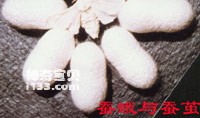
The development of silk in ancient my country promoted foreign trade and cultural exchanges, forming the world-famous "Silk Road", a silver thread connecting the Eastern and Western worlds. As early as the 11th century AD, silkworm breeding and sericulture technology were introduced to Korea, to Japan in the 2nd century BC, and to Turkey, Egypt, Arabia and countries along the Mediterranean Sea in the 6th century AD. The technology of raising silkworms was introduced to Europe in the 6th century AD, so silk represents ancient Eastern civilization and plays a very important role in cultural exchanges between the East and the West. Silk is a popular commodity. It and silkworm breeding technology spread westward through the Silk Road, passing through grasslands, deserts, oases and mountains, and a number of famous towns emerged along the way, such as Wuwei, Zhangye, Jiuquan, Dunhuang, Guizhou, etc. Hereby, Shuqin, etc. From the 3rd year of Jianyuan (138 BC) to the 3rd year of Yuanshuo (126 BC), Zhang Qian set out from the west of my country on the order of Liu Che, Emperor Wu of the Han Dynasty. He visited some countries west of the Pamir Plateau and established contacts. Silk is an important product in my country. Therefore, in ancient times, the West called the ancient capital Chang'an the Silk City and my country the "Silk Country." There is also the Silk Road in the south, which reaches Myanmar and India via Chengdu, Baoshan and other places; on the eastern coast, there are ports such as Xuwen (Guangdong), Hepu (Guangxi), Penglai (Shandong), and Ningbo (Zhejiang) leading to the Pacific islands. and region.
6. Changes throughout life (metamorphosis of moths)
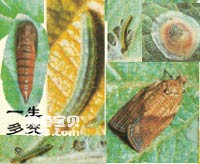
Lepidoptera is a complete metamorphosis insect that goes through four completely different stages in its life, namely egg, larvae, pupa and adult. The feeding habits of the larvae and adults are also different. The larvae feed on plants, while the adults suck nectar, juice and water. If you can personally observe an ugly caterpillar slowly transforming into a beautiful butterfly or moth, you will not only marvel at the wonder of the Creator, but you will also be deeply impressed by all kinds of strange life phenomena.
7. The mysterious spots on moths (the formation of colors)
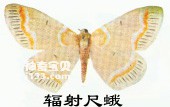
The main characteristics of Lepidoptera that can be recognized at a glance are the patterns and colors on their wings.
Lepidopteran wings have many of the most beautiful colors found in the biological world. The bright colors are the most attractive part of butterflies and some moths.
Color can be produced by pigments, structures, or both. Color usually appears on the scales of butterfly moth wings, but may also appear in the underlying epidermal tissue and remain even if the scales are removed, as in some swallowtail butterflies.
·Pigments are chemicals produced during metabolic processes, often as excretion products. Little is known about the pigments of butterflies, but some pigments have been studied extensively and their detailed chemical structures have been identified. Pigment color: Melanin is a particularly common pigment, which appears as dark brown. It was once thought that the green color of many larvae and pupae was obtained directly from plants in the same way as chlorophyll. It now appears that chlorophyll has not been found in Lepidoptera, but green pigment is biochemically derived from chlorophyll. Red and reddish-brown are also produced by pigments. The instability of many butterfly pigments is caused by their fading when exposed to sunlight, and they can often be artificially altered through chemical reactions.
Structural color is produced by the physical properties of the scales on the butterfly's wings. When the scales are viewed under a microscope, we can usually see many longitudinal ridges. In some species, these ridges consist of many translucent lamellae that are angled to the scale surface and filled with air. This structure causes refraction, reflection and interference of the light shining on it to form various colors. The color changes vary with the angle of illumination. This structure is quite stable for specific species. A similar illustration can be made using an oil film on water. Both water and oil films are colorless and transparent. When light passes through the oil film and reflects back from the water surface, it interferes and forms iridescent colors.
There is a simple way to distinguish these two colors. Sprinkle some water on the wings, if the color remains the same it is pigment color, if the color darkens it is structural color.
The white color in butterflies can also be produced by structural color. Tiny transparent particles disperse light to produce white. The effect is the same as the white color of snow, but there is no actual pigment. Human white hair is also the result of a similar structure, rather than any white substance. Mixed Colors: Combinations of structural and pigment colors are more common than structural colors alone. Colors in photos are often just structural colors, leaving the underlying pigment colors unexposed. There are two species of Papilion butterfly, Troides, which combine structural color and translucent golden pigment to form the most beautiful and colorful colors. Specimens of the fluorescent Papilion butterfly T. magellanus only have a golden yellow pigment when viewed from above, but when viewed from behind, beautiful pink and green flashes appear on the hind wings.
8. Cordyceps sinensis (Cordyceps sinensis)
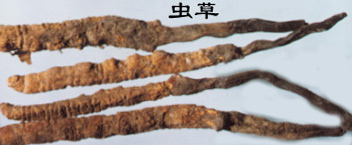
Everyone knows or has heard of Cordyceps sinensis. The ancients said that it is a worm in winter, becomes a grass in summer, and turns into a worm in winter. Is that true?
Cordyceps sinensis is produced in mountainous areas with low temperatures, severe cold, and altitudes of more than 3,000 meters in the southwest. It was first seen in the medicinal books "Herbal Congxin" and "Compendium of Materia Medica Supplement". In the 1720s, a French scientific expedition discovered Cordyceps sinensis in Tibet, my country. It was 100 years later that British botanists revealed its true identity.
It turns out that Cordyceps sinensis is formed when the larvae of the bat moth are infected by fungi of the genus Cordyceps. In the early stages of larvae infection and illness, the larvae show slow movement, then become frightened and crawl around, and finally burrow into the roots of grass 3 to 5 cm deep from the surface, with their heads facing the soil surface, and die soon after. Fungal hyphae feed on the internal tissues of the larvae and grow inside the larvae. Although the larva is dead, its body shell is still intact and it still looks like a worm when found in winter. After the cold winter, when spring warms up and flowers bloom in the second year, the fungus in the insect body develops rapidly. By May or June, a fungal spores grow from the head of the larvae, 2 to 5 cm long, with an enlarged top and ascospores. Filled with capsule. After the ascospores mature, they are emitted from the ascus shell and then infect other larvae. Therefore, the infected larvae are complete larval corpses under the surface, and a grass-like fungus grows on the surface, hence the name Cordyceps.
9. Canopy and trajectory (canopy caterpillar)
Malacosoma neustria testacea Motschulsky
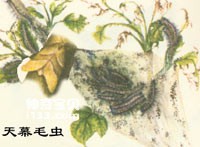
Mature larvae are 50-60 mm long; the head is grey-blue with a pair of black round spots; the body color is complex and bright, with a white dorsal line, orange-yellow sub-dorsal line, interspersed with black spots and stripes, and a gray-blue upper line of the valve. , wider, interspersed with black markings, the valve line is yellow, the valve lower line is gray-blue, the ventral surface is gray-white, there is a pair of blue-black hairy tumors on the 8th segment of the abdomen, the valve screen is black, and the perivalve piece is yellow; the bodyThere are small hairy tumors on each section of the body, covered with yellowish brown or light dark brown long hairs; the thorax and legs are yellowish brown, and the abdominal legs are dark brown.

One generation occurs every year, overwintering as eggs and hatching in early spring of the following year. Young larvae live in groups, weaving silk nets between branches and leaves to make nests (called canopies). They cause damage at night and hide in the nest during the day. Mature larvae disperse and cause damage. The larvae are in their sixth instar, about 45 days old, and double knots are formed between the leaves. Cocoon and pupation. The pupal stage lasts 14 days, and adults emerge from July to August. They lay eggs on thin branches, arranged in a ring, with about 100-400 eggs per egg mass. Adult insects are phototaxis. The larvae feed on a variety of species, mainly damaging apples, plums, apricots, pears, peaches, cherries, oak trees, elm trees, elm trees, elm trees, silk cottonwoods, pillar trees, oak trees, etc.
Distribution: Northeast, North China, Inner Mongolia, etc.; Soviet Union, North Korea, Japan.
10. Imitation to avoid chaos (deer moth)
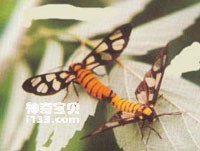
Amatidae is a small to medium-sized moth that looks like a spotted moth or a wasp. The beak is well developed, but sometimes degenerates, the lower lip is short and flat, long and curved downward or upward, the head is small, and the antennae are filamentous or double-bent. The tibial pitch of the thorax is short, and the abdomen often has spots or bands. The wing surface often lacks scales, forming a transparent window; the forewings are spear-shaped and quite narrow, the top of the wing is slightly rounded, and the middle chamber is more than half the length of the wing; the hind wings are significantly smaller than the forewings. The larvae are brightly colored, with four pairs of abdominal feet and one pair of buttocks. The body surface often has hairy tumors with tufts of hair growing on them, and the hooks of the abdominal toes are semi-circular; the pupae are smooth, hard, and cocooned.
Deer moths are mostly diurnal and often fly and suck in flowers. They open their wings when resting. Because deer moths have blunt bodies, small hind wings and weak flying power, people often use their hands to catch them.
11. A wasp-like penetrating moth
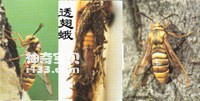
The wing surface of the transparent moth is narrow, lacks scales, is transparent, and looks very much like a hymenopteran wasp. Adult beetles of most species are active during the day and especially like to fly in the sun. The antennae are club-shaped with hairs at the end, and the male moth has teeth or comb-like shape. It has a thick chest and a long stretched abdomen. It flies quickly and often goes to flowers to feed on nectar. The larvae feed on tree trunks, branches or roots, and forest trees and fruit trees are bored to death, often causing great losses.
12. Put on feathery wings (feather moth)
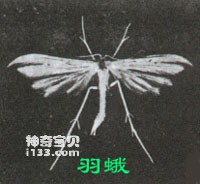
Feather moths are small moths, so named because their two pairs of wings are split like bird feathers. Its forewings are usually divided into two lobes, and the hind wings are usually divided into three lobes, with long fringes. Adults fly during the day, and some are active at dusk or night, but their flying power is generally weak. When resting, the forewings are often wrapped around the hind wings and folded, with the left and right sides stretched out like the wings of an airplane, so it is easy to identify.
animal tags: Moths fun moths silkworms cordyceps caterpillars
We created this article in conjunction with AI technology, then made sure it was fact-checked and edited by a Animals Top editor.